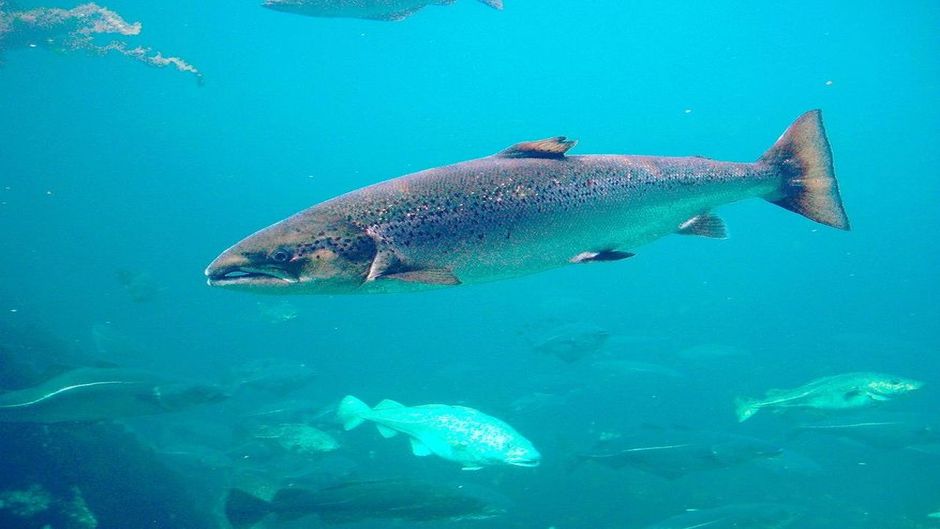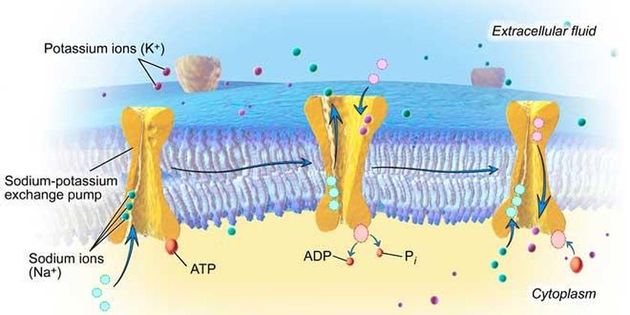How can salmons live in both the salty waters of the sea and the fresh waters of rivers? The answer lies in their capacity for osmoregulation.
 Atlantic salmon (Salmo salar). / Wikipedia.
Atlantic salmon (Salmo salar). / Wikipedia.
Salmon are fish that can inhabit both the salt water of the sea and the fresh water of rivers.
There are two main genera: the Atlantic, or European salmon (Salmo sp.), of which there are more than 40 different species and the Pacific salmon (Oncorhynchus sp.) with 17 fully identified species.
As for the fish that can live in waters with such different levels of salinity, without their metabolism being in any way affected, they are called “euryhalines”, a term which means “high degree of salt tolerance”.
That said, most of these fish cannot withstand changes of this kind. Sardines, for example, cannot live in rivers, and nor can carp live in the sea, for which reason they are called “stenohaline”.
So how can salmon achieve this astonishing feat? The answer lies in their capacity for osmoregulation.
In order to understand this capacity, it is first necessary to grasp the concepts of “osmosis” and “osmotic pressure”.
Osmosis is the term given to the passive diffusion that the water undergoes as it passes through the semipermeable membrane of their cells, and as it does so it changes from a more diluted solution to a more concentrated one.
Osmotic pressure, on the other hand, is the mechanism required to inhibit this water flow. The cells of fish, like those of other living organisms, must remain in a delicate osmotic balance, that is to say, their osmotic pressure must be the same as the liquids that surround them.
Salmon must control very carefully the osmotic pressure of their cells, as well as their body fluids and ions fevery time the travel from fresh to salt water and vice versa. This requires a period of aclimatisation before they undertake their migrations.
The young salmon begin by drinking a large amount of fresh water from the river. Subsequently, their kidneys abruptly reduce the production of urine and, eventually, the molecular pumps of sodium ions (Na+) of the membranes of the branchial cells are reversed so that they pump the sodium outwars instead of inwards.
This whole process changes againb when the fish is an adult in the sea and has to swim up the river again to mate and lay its eggs.
In ancient times, when nothing was known about all these physiological changes that salmon underwent and it was attempted to breed them in captivity for human consumption large numbers of them died in fish-farms.
Now the transition of the water they inhabit is controlled with great care, gradually changing from fresh to salt water and vice versa, as appropriate for the needs of the fish.
The most interesting feature of these metabolic changes is that they depend on a tiny molecular machine which needed to work perfectly from the very beginning in order for the fish to be able to survive. The osmoregulation of these fish is another example of irreducibly complex design.
In fact, their branchias have slightly modified cells whose membranes possess many of these lilliputian machines, known as “sodio-potassium pumps”, which are ATPase enzymes.
These structures pump potassium ions (K+) towards the interior of the cell and at the same time they pump sodium ions (Na+) outwards, whereby the necessary differences of concentration and electrical voltage are maintained through the membrane.
Most animal cells spend a fifth of their energy on making these pumps work.

As fresh water is low in sodium, the salmon, when they are young and swim downstream towards the sea, need to pump it actively towards the interior of their cells.
However, on reaching the ocean, they find themselves in water that is rich in sodium, which requires them to pump in the opposite direction, towards the outside of the cell.
These pumps are so sophisticated that they can quickly change the direction in which they work. Each pump, in a single cycle, moves three ions of sodium for every two ions of potassium, against a concentration gradient, and in the course of this transfer it expends a molecule of ATP.
The details, the molecules and the cells involved in the process are much more complex than what I have explained here, but all these machines work in salmon at an extraordinary speed and in a perfectly coordinated manner.
Besides this complexity, the fish also possess the instinct they need to behave in the way that is best suited to this task, not swimming to the sea before the appointed time or swimming upstream prematurely, as their bodily fluids and the concentrations of ions must be precise at every moment in order for their muscles, nerves, senses and every other system to work perfectly.
When we add to this the characteristics of their biological cycle, their sense of direction, their sense of smell, etc. the result is an overwhelming impression of design.
And the old words of Job come to mind again and again.
“But ask the beasts, and they will teach you;
the birds of the heavens, and they will tell you;
or the bushes of the earth, and they will teach you;
and the fish of the sea will declare to you.
Who among all these does not know
that the hand of the Lord has done this? (Job 12:7-9)

Las opiniones vertidas por nuestros colaboradores se realizan a nivel personal, pudiendo coincidir o no con la postura de la dirección de Protestante Digital.
Si quieres comentar o